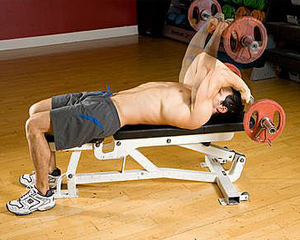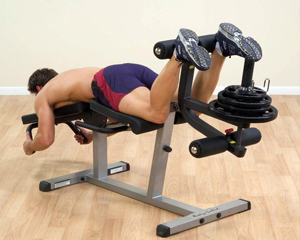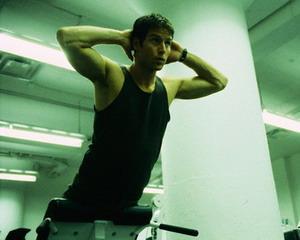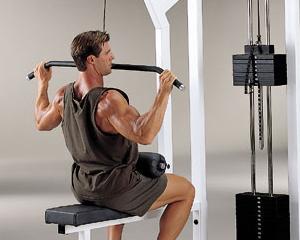HYPER EXTENSIONS
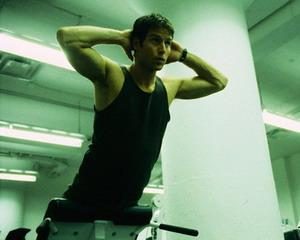 Hyperextension (in English hyperextension – overdistension, overdistension) is an auxiliary exercise, which works well on the muscles of the lower back, tightens the buttocks and gives a decent load on the biceps of the thigh. Exercise is good in itself for strengthening and preventing lower back injuries, as well as warming up the muscles before performing heavier exercises, such as deadlift.
Hyperextension (in English hyperextension – overdistension, overdistension) is an auxiliary exercise, which works well on the muscles of the lower back, tightens the buttocks and gives a decent load on the biceps of the thigh. Exercise is good in itself for strengthening and preventing lower back injuries, as well as warming up the muscles before performing heavier exercises, such as deadlift.
Hyperextensions will also serve as an excellent therapeutic movement if you have a lower back injury.
Technique perform hyperextension
Technique of the exercise:
1. Lie face down on the exercise bench so that the torso hangs from one end. Push the anchors into the back support platform with your ankles or ask the orchestra to hold them for the duration of the exercise. Arms crossed on his chest, and lift the body to its parallel with the floor. This is the starting position.
2. Inhale, and, holding your breath, gently lower yourself as low as possible.
3. After holding for a split second in the lower position, gently lift the body until it is fully straightened. In the middle of the climb, exhale.
It is important:
The movement of the body should be smooth, sharp jerks fraught with injury to the waist.
Hands, with or without a burden, keep crossed on the chest. Often, you can see how the hands, with or without a burden, are held behind the head, but this option leads to a roundness of the back, and an unnecessary load falls on the cervical spine, which is fraught with unnecessary injuries.
It is not necessary to raise the body above the initial position, thereby over-bending the back. Many believe that this embodiment of the exercise is more effective, forgetting about its injury to the spine. Not worth the risk, where it brings questionable benefits.
Options
Hyperextensions on the bench at an angle of 45 degrees. In this embodiment, you perform the exercise using the bench for the press, while the body is in its initial position at an angle of 45 degrees to the plane of the floor.
Reverse hyperextension. In this variant of the exercise, the body remains stationary, and the legs rise up to the same line with the torso.
Working muscles with hyperextension
gluteus muscles
lower back muscles
biceps hips
hip muscles

